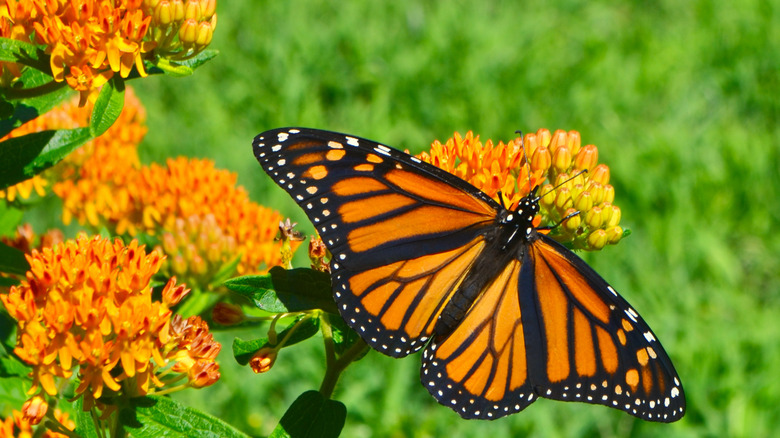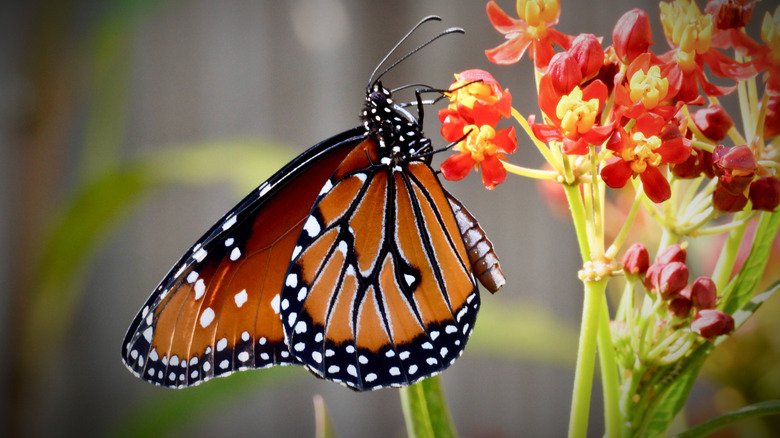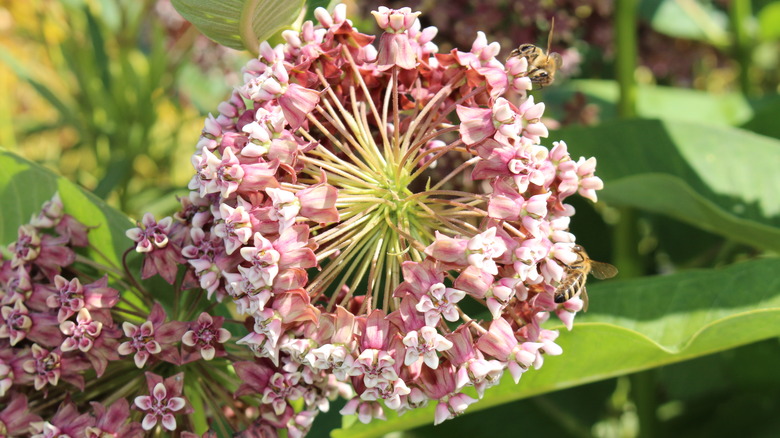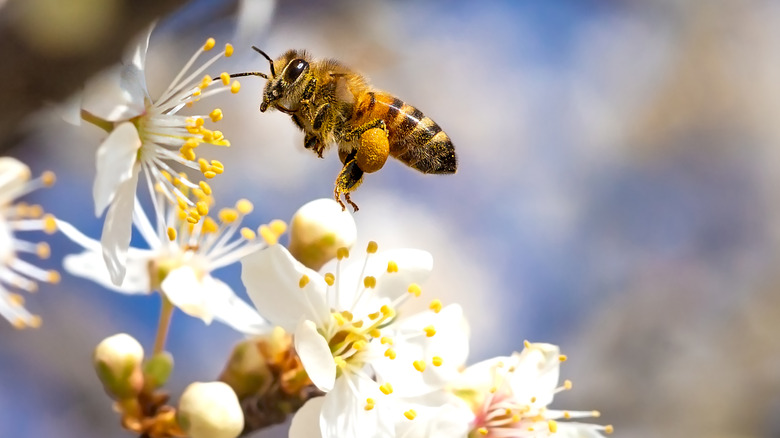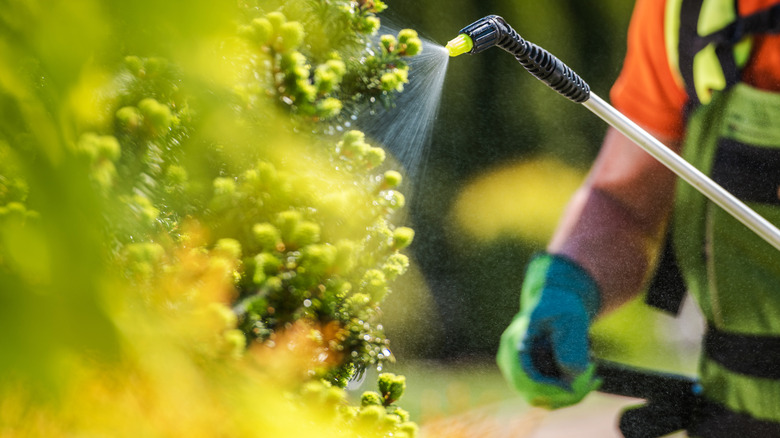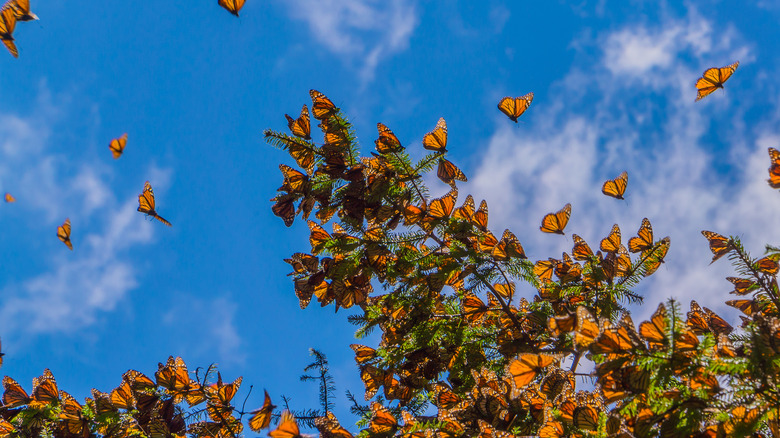Design Your Garden To Help Monarch Butterflies Thrive Now They're Endangered
We may receive a commission on purchases made from links.
As of Thursday, July 21, 2022, the IUCN declared the monarch butterfly (danaus plexippus) on the red list for endangered species. In a saddening press release, the IUCN notes that climate change, deforestation, and illegal logging have all harmed the population to devastating ends. Monarch butterflies, or milkweed butterflies, are known for their perilous migratory patterns that span across much of North America, from Mexico to the far north of the continental United States. Additionally, monarchs are important pollinators, like bees, hummingbirds, and other insects.
While other pollinators face dire situations, and our natural world is met with harsh consequences of climate change, you may be wondering how you can help preserve these beautiful butterflies. Thankfully, sustainable, conservationist gardening practices are easy to adopt and adapt and can work in any region and climate. We've gathered 5 of the best practices for rejuvenating the monarch population right in your home garden.
1. Ditch the tropical milkweed
Monarch caterpillars and butterflies feed exclusively on milkweed plants (asclepias.) As this is their sole food source, many folks have looked for hardy milkweeds to plant in their garden. One of the species that is easiest to grow is tropical milkweed (asclepias curassavica), which never dies out in the winter, says Science.org. While this may seem like a no-brainer, tropical milkweed is actually potentially harmful to monarch populations.
Because it never dies out, many monarchs won't bother making their migration flight because there's a constant food source. So when they lay their eggs, they are subject to harsh weather conditions, which furthers population loss. In addition, the monarch fails to carry pollen across North America, an essential ecological process. Moreover, because tropical milkweed doesn't die, the plant is more susceptible to disease, another unexpected issue. Instead, opt for a native milkweed plant, specific to your region. Not sure where to get started? We can help with that, too.
2. Plant native milkweed
One of the strongest calls to action for saving the monarch population is planting milkweed in your home garden. Doing so provides an easy food source for monarchs and many other pollinators, explains the U.S. Forest Service. However, it is essential to find a native species of milkweed. The relationships and patterns of pollinators and plants have evolved over many millennia, and using native plants makes it easier for butterflies to maintain their natural programming, and better maintain a balanced ecosystem.
Some of the most popular species include common milkweed (asclepias syriaca l.), showy milkweed (asclepias speciosa), and butterflyweed (asclepias tuberosa), but there are over 70 species of milkweed native to the U.S. — 30 of which are utilized by monarchs, says Monarch Watch. If you aren't sure which species is native to your region, you can use the Milkweed Finder Tool from Xerces Society, which will help you identify what milkweeds are available and native to your state, as well as where to actually purchase seeds.
3. Plant for all pollinators
While all pollinators can eat milkweed, monarchs cannot feed on other pollinator-friendly plants. So in addition to planting plenty of native milkweed, you'll want to diversify your garden to drive down competition between monarchs and other pollinators. Pollinators can come in many forms, like bees, wasps, hummingbirds, beetles, bats, and butterflies, many of which are facing endangerment themselves, says Pollinator Partnership.
Bees cannot see red, so to help them out, be sure to plant purple, pink, and blue flowers such as asters, yarrow, spider plants, and more. Hummingbirds, however, enjoy reds, oranges, and yellows. Fruit plants like mangoes and bananas, agave, and eucalyptus benefit bats. Herbs are also an incredible pollinator magnet thanks to their pungent fragrances. Remember, over-engineered annual flowers are not a benefit to pollinators. To further aid in conservation efforts, look for plant varieties that are native to your region, are drought tolerant (meaning they require less watering), and try to plant edibles like herbs and veggies to decrease demand for global farming.
4. Abandon pesticides
Herbicides, pesticides, and insecticides have had a catastrophic impact on both native plants and animals since their introduction in the late 90s, says the Natural Resources Defense Council. Used widely in industrialized farming, the most common herbicide is made of glyphosate, and can be found in household products like Round Up. While milkweed is not a weed at all, the natural population of milkweed has been decimated by glyphosate, leaving monarchs with no natural food source or a safe place to lay eggs. Additionally, while some insecticides and pesticides claim to have minimal impact, just the scent of these chemicals can put other pollinators off of important plants.
Because of this, it is important not to reach for synthetic chemicals when it comes to garden issues. Weeding can be handled manually, and there are plenty of natural, targeted repellants for garden pests such as slugs, termites, and grubworms. Neem oil has been used for thousands of years to eliminate pesky garden fiends, while your kitchen scraps may be the key to keeping your garden healthy, pest-free, and pollinator-friendly.
5. Build a certified monarch waystation
If you're ready to kick things up a notch, consider building and certifying your garden as an official monarch waystation. This may sound intimidating, but it's really just a matter of combining all of the aforementioned steps and registering with Monarch Watch. Your monarch waystation needs to have at least 10 plants of one milkweed species, but two species and more than 20 plants are recommended. Plant your milkweed in an area that receives full sun exposure (six or more hours per day). Try to have at least 100 square feet dedicated to your waystation, though this can be spread throughout multiple areas in the garden.
Once you've got your waystation up and running, register it to receive a certificate and plaque, and have your waystation on the official registry. Even if you don't feel that you have the time to curate your garden, you can always snag a seed variety pack like the Monarch Butterfly Rescue Wildflower Seed Kit on Amazon to cover your bases.
